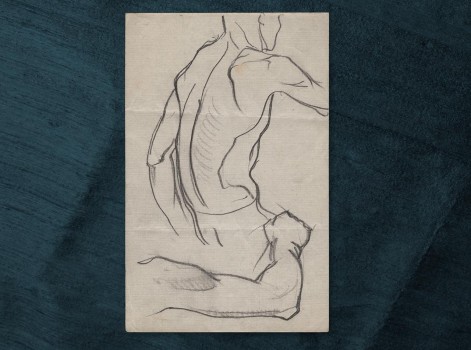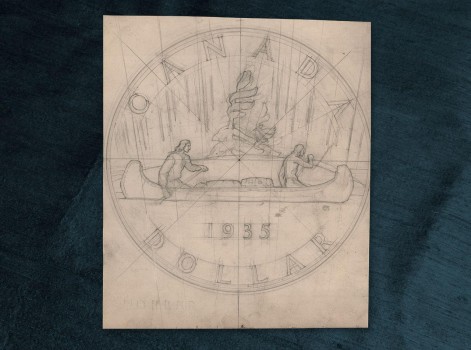Coin designs of Emanuel Hahn
An Emanuel Hahn First World War memorial design in Lindsay, Ontario. (Wikimedia Commons, Richard BH, Hamilton, ON)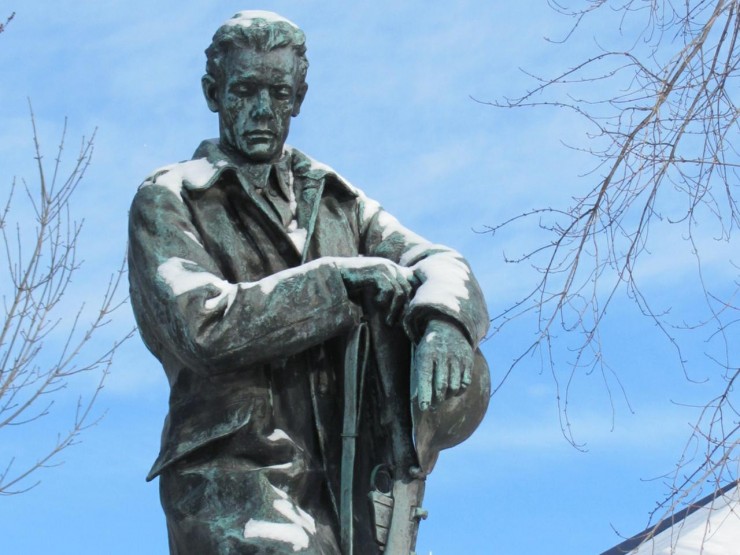
Emanuel Hahn was a celebrated Canadian sculptor whose work can be seen in the monuments of many Canadian cities. Born in Germany in 1881, Hahn immigrated to Canada with his family at the age of 7. Along with medals and a number of significant war memorials, Hahn designed some of Canada’s most distinctive and iconic coins. The voyageur silver dollar, the Bluenose dime, the caribou 25 cent piece and the 1939 silver dollar commemorating the Royal Visit of King George VI and Queen Elizabeth were all Hahn designs.
Pencil drawing by Emanuel Hahn sketching features proposed for the back of the 1935 silver dollar. 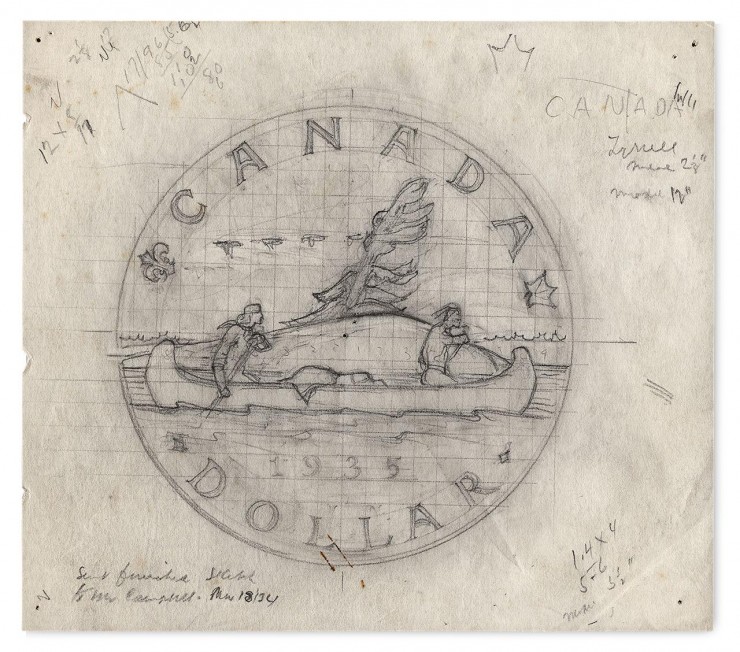
(NCC 1963.059.015.004)
In 1934 the Department of Finance invited Emanuel Hahn to submit a design for a silver dollar commemorating the silver jubilee of the reign of King George V. Hahn corresponded with the Royal Mint in London and the Royal Canadian Mint to gain insight into the process of minting a coin before submitting a drawing depicting a voyageur and a First Nations man paddling a canoe. To ensure accuracy, Hahn studied the designs of traditional canoes and the paintings of Frances Anne Hopkins. Hahn’s design was approved with only a few minor changes and was used as the standard pattern for the Canadian silver dollar until the introduction of the ‘Loonie’ in 1987.
Following the success of the voyageur silver dollar, Hahn was among several artists invited to submit designs for new Canadian coinage to be released in conjunction with the accession of King George VI, in 1937. Hahn produced no less than 16 sketches. His caribou (proposed for both the nickel and the quarter) and his Bluenose were both selected for the new coins. All of the designs put into circulation in 1937 are still to be found on Canada’s circulating coinage today. Hahn left an impressive mark on Canadian currency and all Canadians can be proud to have a ‘Hahn original’ in their pockets.
Reverse of 1935 silver dollar designed by Emanuel Hahn. 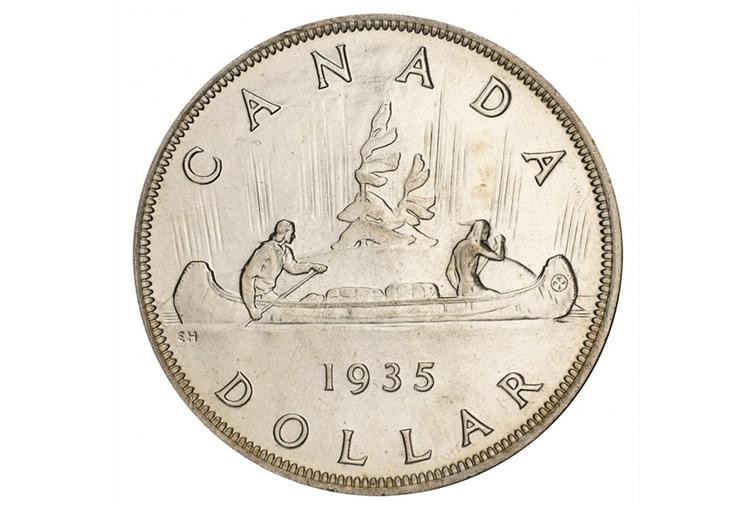
(NCC 1978.058.285b1)
Emanuel Hahn’s legacy of coins, drawings, plaster models and correspondence is preserved in the National Currency Collection of the Bank of Canada.
The Museum Blog
Teaching math using money
By: Jonathan Jerome
From skip counting to making change, working with money is a great way for students to practice math skills.
Caring for your coins
By: Graham Iddon
Coin collecting can be a fun and fascinating hobby. But there are a few things you should know to keep your collection safe and in good condition. Because coins aren’t as robust as you might imagine.
Security is in the bank note
By: Graham Iddon
Security printing is a game of anticipating and responding to criminal threats. Counterfeiting is a game of anticipating and responding to bank note design. This cat and mouse relationship affects every aspect of a bank note.
Teaching art with currency
By: Adam Young
From design to final product, bank notes and coins can be used to explore and teach art, media and process.
New Acquisitions—2022 Edition
It’s a new year—the perfect time to look back at some notable artifacts the Museum added to the National Currency collection from 2022. Each object has a unique story to tell about Canada’s monetary and economic history.
Money: it’s a question of trust
By: Graham Iddon
The dollars and cents we use wouldn’t be worth anything to anybody if we didn’t have confidence in it. No matter if it’s gold or digits on a hard drive, public trust is the secret ingredient in a successful currency.
The day Winnipeg was invaded
By: David Bergeron
People on the street were randomly stopped and searched, and some were even arrested and imprisoned in an internment camp. Even German marks replaced Canadian currency in circulation—in the form of If Day propaganda notes.
Positive notes
By: Krista Broeckx
The imagery on the Bank of Canada’s 1935 note series depicts the country’s rich industrial history.
Army bills: Funding the War of 1812
In 1812, British North America had no banks and little currency. With the prospect of war drying up supplies of coins, the government of Lower Canada decided to issue legal tender notes called “army bills” to pay for troops and supplies.
Between tradition and technology
By: Graham Iddon
What was proposed was a complete about-face from the philosophy behind recent security printing. If photocopiers could easily deal with the colours and designs of the current series, then the next series should be bold and simple.
